Snakes gallery
This gallery presents the twelve snakes responsible for a majority of snakebites around the world.
Africa, Middle East and Asia: The cobras (genus: Naja) are one of the most widely distributed groups of venomous snakes in the world spanning most of Africa, parts of the Middle-Asia, and many areas in Central, South and South-East Asia.
Dr David Williams
The Americas: Rattlesnakes are found from southern Canada throughout the USA into Mexico, Central and the northern half of South America. There are many different species and bites are very common. Pictured is a neotropical rattlesnake, Crotalus durissus from South America.
Asia: Malayan pitvipers are responsible for thousands of cases of snakebite in South and South-East Asia. These snakes often lie camouflaged in undergrowth and leaf litter close to paths and in plantations and many bites occur when they are stepped on.
Dr David Williams
Sub-Saharan Africa: The mambas are a group of widely distributed venomous snakes with neurotoxic venom that are greatly feared because of the high case fatality rate associated with envenoming by D. polylepis. They occur in a range of habitats spanning Sub-Saharan Africa. The specimen shown here is a black mamba, Dendroaspis polylepis, photographed in Swaziland.
Asia: Russell’s vipers are responsible for thousands of cases of snakebite envenoming in South and South East Asia. In Myanmar bites by this snake are a major cause of acute kidney injury requiring haemodialysis. There are two species, Daboia russelii in South Asia and the Siamese Russell’s viper Daboia siamensis. A specimen of the latter species from Cambodia is shown here.
Africa and Arabian Peninsula: Puff adders (Bitis arietans), are widely distributed in Sub-Saharan Africa and the Arabian Peninsula, causing many snakebites that result in permanent disability and death. The specimen photographed is from Kenya.
Africa, Middle East and South Asia: The saw-scaled, or carpet vipers of the genus Echis (pictured is Echis ocellatus, a West African carpet viper, from Togo) are a major cause of snakebite envenoming.
Dr David Williams
Africa, Middle East and South Asia: There are several species of cobra belonging to the genus Naja (pictured are Naja haje, the Egyptian cobra, photographed in Kenya on the previous page; and Naja kaouthia , a monocellate cobra from Thailand). Cobra species occur throughout Sub-Saharan Africa, the Arabian Peninsula, parts of the Middle-East and Central Asia, and extending throughout South and South-East Asia.
DJ Williams
Throughout Latin America the lance-headed vipers of the genus Bothrops are the major cause of snakebite death and disability. Pictured here is a fer-de-lance (also known as Terciopelo), Bothrops asper from Costa Rica.
Dr. David Williams
Australasia: In Australia in particular more than 50% of all deaths are caused by brown snakes from the genus Pseudonaja (in this case Pseudonaja textilis, the common brown snake, from eastern Australia).
Australasia: The majority of deaths from snakebite in Australia and Papua New Guinea, occur in PNG and are caused by Papuan taipans (Oxyuranus scutellatus). Without antivenom the case fatality rate after bites by this species is close to 100%.
D.J. Williams
Asia: Several species of kraits with potent neurotoxic venom are found in South and South-East Asia. Pictured is the Malayan krait Bungarus candidus from Thailand. These snakes often enter dwellings at night, biting people who are sleeping unprotected on mats on the floor. Sleeping on a raised platform, with a well-tucked-in mosquito net can effectively prevent krait envenoming.
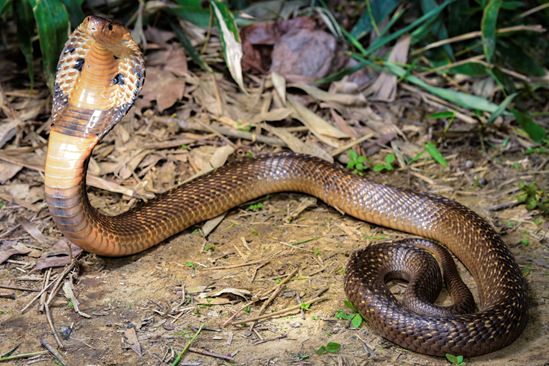
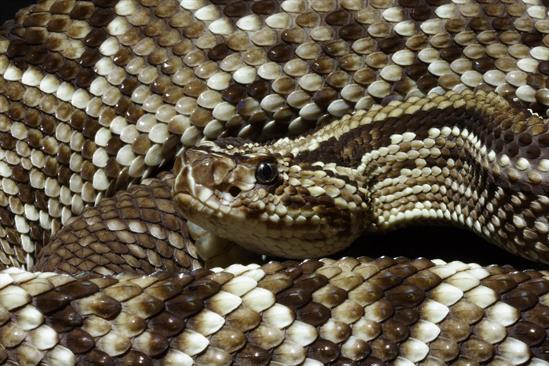
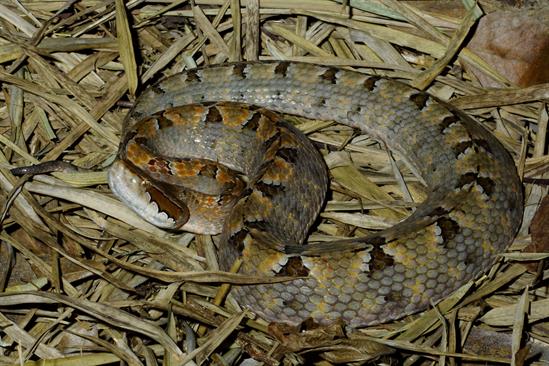
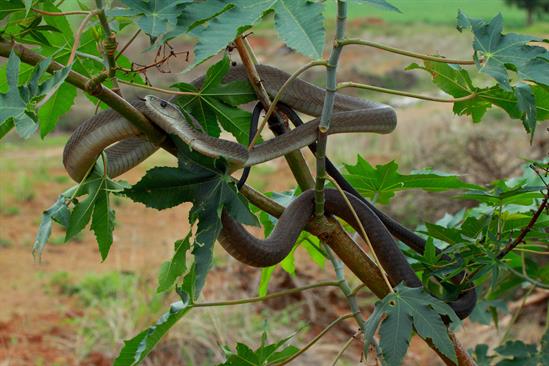
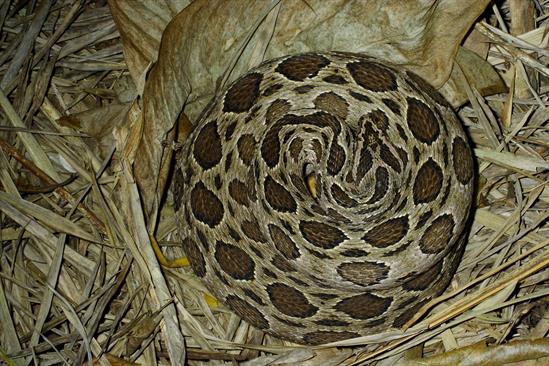
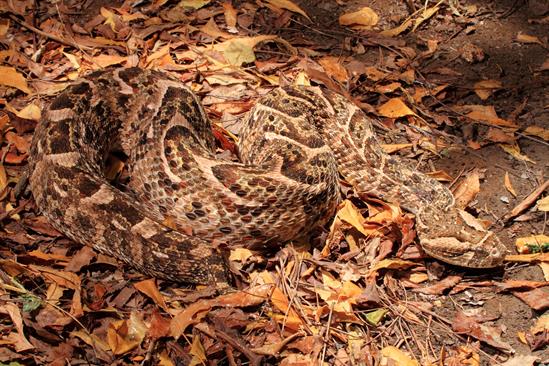
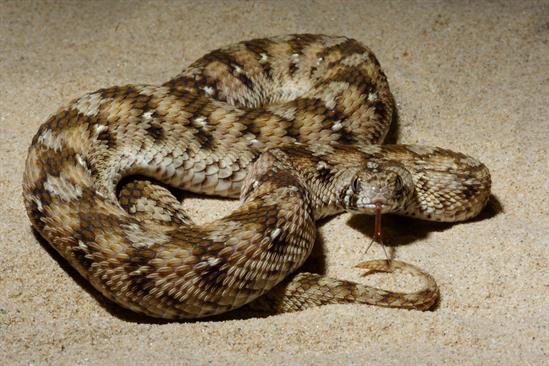
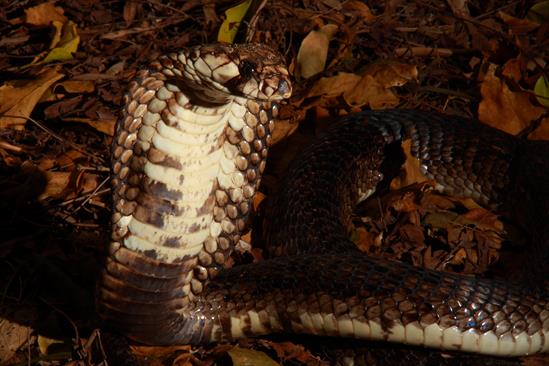
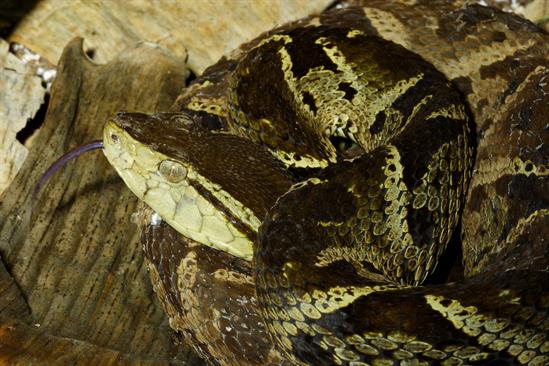
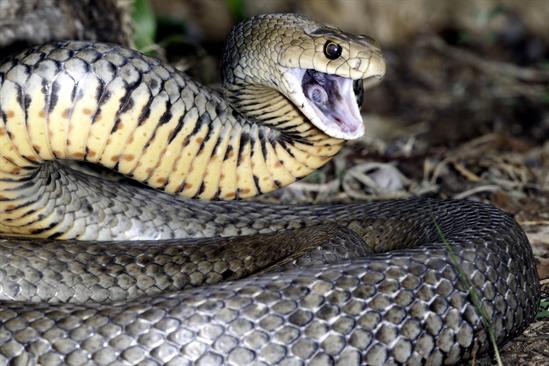
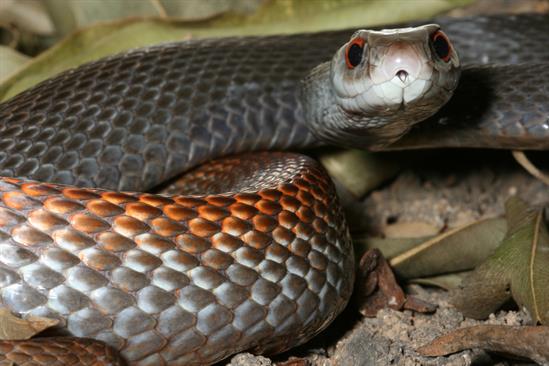
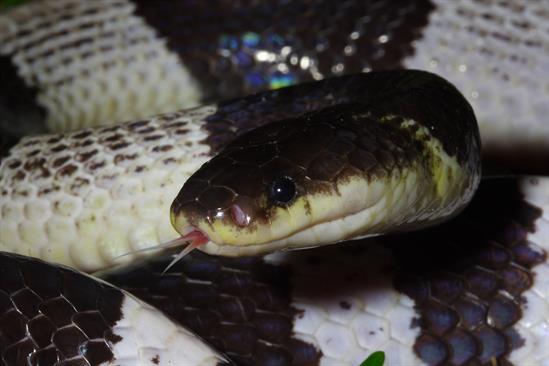
Related health topic
Related activity
